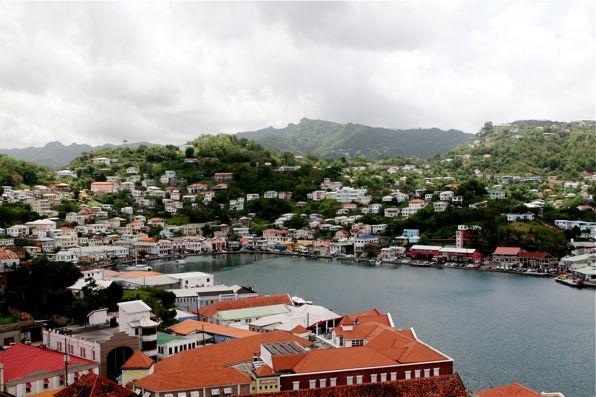The Carenage
With only a day or two left at the marina, Rebecca and I took advantage of the close proximity to explore St. George’s some more and do a bit of shopping. From Port Louis Marina, getting to the heart of town is easy enough as you can either walk around the Carenage or take one of the many local buses for the grand sum of $2.50 EC (a bit less than a dollar US).

The Carenage, the bay of water around which St. George’s is built, is so named because island schooners were once careened there. Careening is the act of intentionally beaching a vessel at high tide so as to expose the hull for maintenance or cleaning when the water recedes. When monohulls with large keels do this they tend to tip over. With cats, they can remain flat, making it an even more attractive option in my opinion, if you can find a suitable location.

As it stands, when we leave the marina tomorrow, bottom cleaning will be on our to-do list but I think we’ll be doing it the “traditional” way which for us, involves masks, snorkels and getting wet.





I have just looked on the tide tables for there. Maximum range 0.53m. So how did anyone do carenage on such a small tidal range? And is this why you do yours afloat?
Mike
I thought about that too (tidal range). I don’t know how they did it.
LOL. Its easy to do ‘careening’ round my way in Morecambe bay, NW UK. Tidal range is up anything up to 10 metres between high and low water on a spring tide. The bore (tidal speed) can be up to 9 knots on a big spring tide.
I would imagine they would use winches (or capstans) and rollers under the hull in Grenada. Not sure how they would have push them back in though. Maybe with several rowing tugs or long sheets across the other side of the lagoon.
Yup – the simple difference between carenage and carnage is an “e”! 🙂